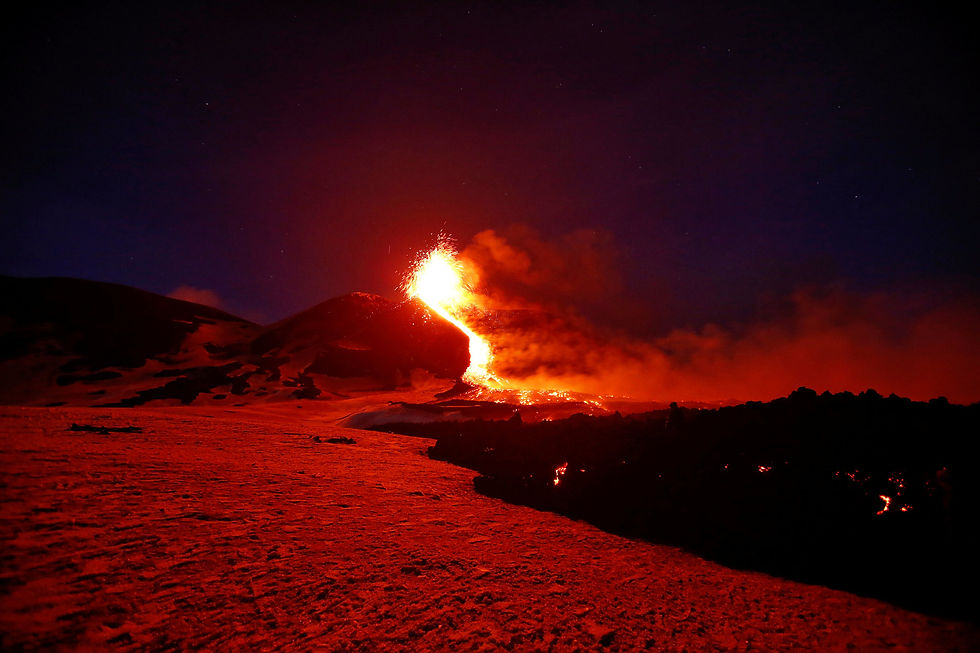Researchers Test Space Rovers on Europe's Most Active Volcano
- Ken Ecott
- Jul 6, 2017
- 2 min read
The German Aerospace Center have simulated a landing on an alien world by conducting robotic exercises in Italy on Mount Etna, Europe's most active volcano, the results of which will be used in the planning for future missions.

Mount Etna's unstable slopes, strong gusts of wind, and frequent seismic activity make for a great space rover testing site.
The German Aerospace Center, the German equivalent of NASA, is using Mount Etna's unique terrain to gain a greater understanding of robotic equipment necessary for space exploration.
"This is aimed at simulating a future, hypothetical landing mission on the moon or Mars and they use a lot of robots which are there to transport and install different instruments," said Boris Behncke, a vulcanologist from Italy's National Vulcanology Institute.
The space rover is about three feet tall and moves on four wheels. The first phase of the program took place at the Piano del Lago section of the volcano. If the landscape seems reminiscent of a science fiction film, it might be because it was used for backdrop photography in Star Wars: Episode III - Revenge of the Sith.

The German space agency isn't the only organization benefitting from the simulation. Italian, American, and British robotics experts are all participating in the test, or ROBEX (Robotic Exploration of Extreme Environments), to improve its robotics divisions. One recent robotics improvement came in the form of a gecko-inspired robot gripper.
While there are many groups cooperating to advance robotics and space exploration, there are also groups competing to become the first private organization to land on the moon.
Volcanologists will also gain valuable insight through seismic-monitoring equipment attached to the rovers. Scientists are hoping to send robots into the volcano's depths for further seismic research. Monitoring seismic activity would be useful for future missions on Mars and the Moon.
Moonquakes last more than 10 minutes compared to earthquakes, which last, at most, two minutes. According to NASA, the extended periods of shaking coupled with some that reached 5.5 on the Richter scale can damage space rovers.
Studies by NASA's Mars Reconnaissance Orbiter suggest that earthquakes on Mars register at 7 on the Richter scale based on rock displacement, but requires further research to clarify the strength and existence.
ROBEX research is ongoing with hopes of ensuring the next lunar mission is one smooth roll for robotics and one safe step for mankind.









Comments